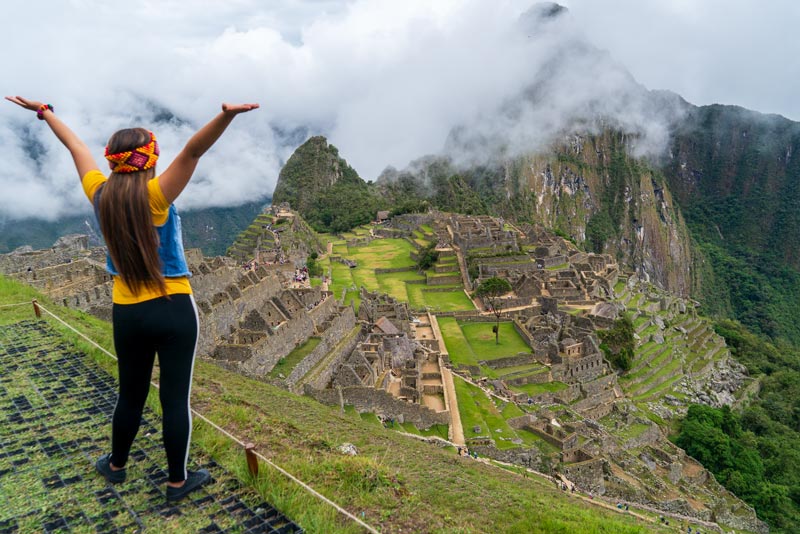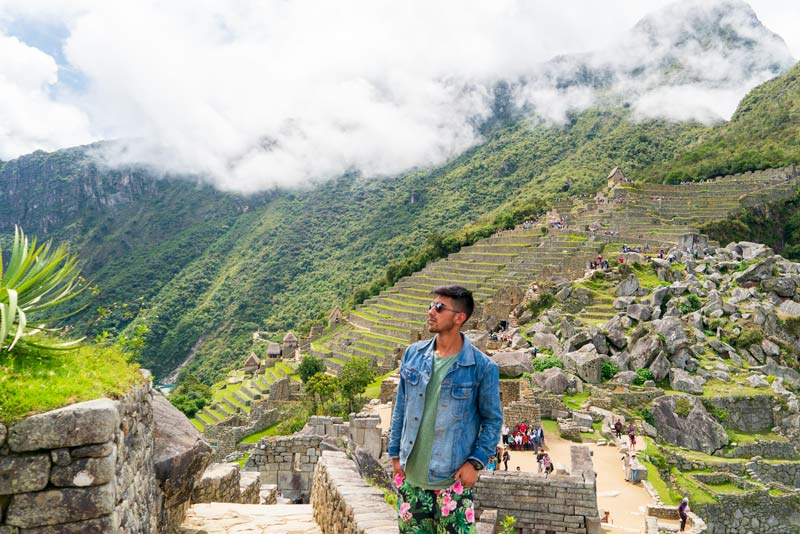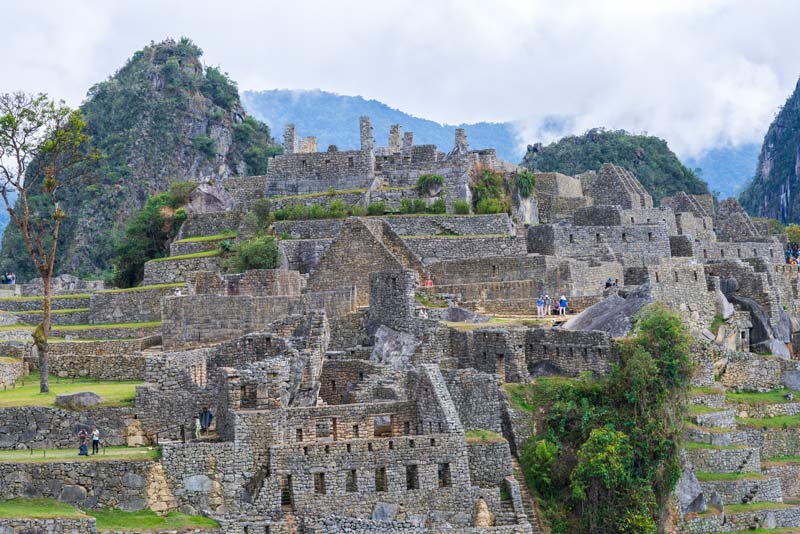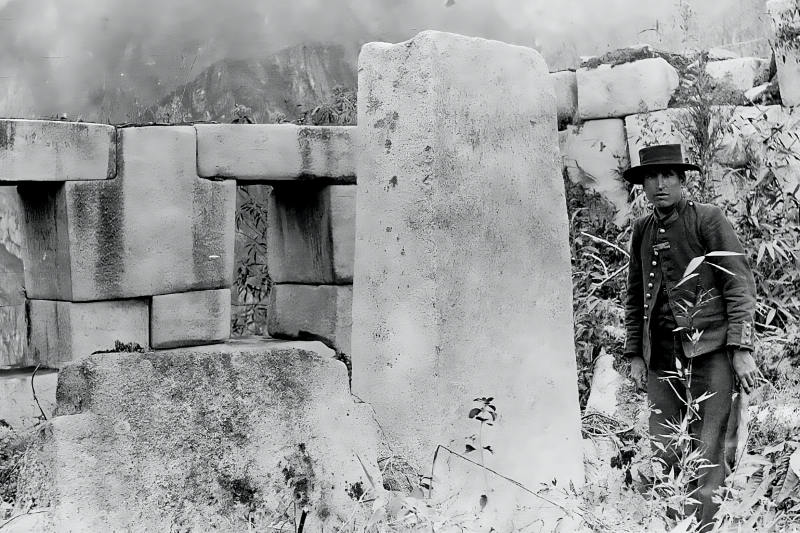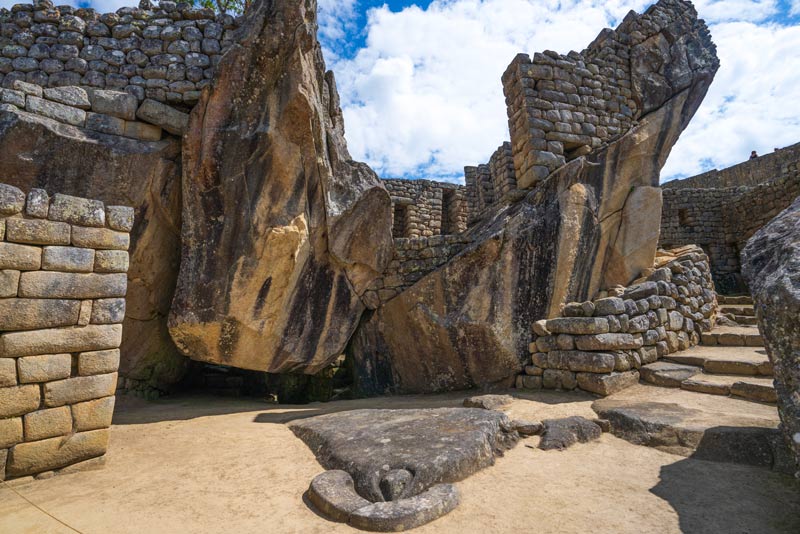Machu Picchu in Cusco: mysteries to unveil
Machu Picchu was an Inca city built around 1450 A.D. by orders of the emperor Pachacutec. Its function was that of an urban and religious center where up to a thousand people lived. There were temples in honor of the Inca gods such as the mountains, the sun, the moon and the earth. In 1911, the American explorer Hiram Bingham made its existence known to the world. Since then, the scientific work of exploration and enhancement began. Although valuable information has been unveiled about the Inca citadel, there are still many aspects and mysteries to be unveiled.
- Machu Picchu, a place of incalculable mystery
- The mysterious energy of Machu Picchu
- The mysterious constructions of Machu Picchu
- The mystery behind Machu Picchu’s history
- The mysterious temples of Machu Picchu
- Questions and answers about the mysteries to be unveiled at Machu Picchu
Machu Picchu in the clouds, an incredible postcard picture
Entering the Inca Trail to Machu Picchu it is possible to see the ancient stone city that seems to be suspended beneath the clouds. The morning light seen from one of the mountains of Machu Picchu, is reflected hundreds of meters below in the river that surrounds the mountains, called Urubamba or Vilcanota. When the clouds end the day is beautiful, and the Inca city of Machu Picchu is revealed as when an artist reveals his work. And although the dry season will allow you to tour the Inca city of Machu Picchu under a radiant sun, the rainy season also has its own. This postcard photo occurs on rainy days, especially in November, December and January. The Inca Trail is closed in February.
Machu Picchu, a place of incalculable mystery
- For some reason, Machu Picchu was built between two mountains, right in the middle between the Andes and the Amazon jungle. Apparently to serve as a link between these two territories, but why did they choose such an inaccessible place?
- Was it a royal residence? Was it a refuge for the virgins destined to the sun? Was it a sacred city? Why was it abandoned? These are just some of the questions that lie behind the purpose for which the sacred city of the Incas was built.
- The Inca city was strategically built on the limits of the high mountains and the Amazon jungle. The objective was to communicate both regions, vital for the trade of products such as coca leaves, minerals and fruits.
- Thus, in 1450 A.D. the emperor Pachacutec ordered the construction of the Inca city in a geography of difficult access, but surrounded by a bank of stones (which facilitated the construction of its temples). Likewise, the Incas chose a beautiful environment, whose stone construction harmonized with nature.
- The result was a citadel that housed about a thousand people. There, agricultural terraces were worked, ceramics and textiles were made. Of course, the Inca gods, such as the mountains, the sun, the moon and the earth, were also worshipped.
- Finally, to communicate Machu Picchu with the city of Cusco, the capital of the Inca empire, part of the network of Inca roads, the famous qhapac ñan, were built.
The mysterious energy of Machu Picchu
- Many people report feeling an indescribable energy during their visit to Machu Picchu.
- Some explain it as a phenomenon that occurs due to the accumulated energy of all the people who visit the archaeological site.
- However, experts in the subject affirm that there is an energy vortex under the Inca citadel, just like the one that existed for a long time, for example, in Tibet.
- This is reflected in popular beliefs among tourists. Such as the belief that by bringing the hands close to the Intihuatana (sundial), the visitor is filled with the energy of the sun. Or by bringing the hands close to the granite of the Sacred Rock, the tourist receives the energies of the mountains.
The mysterious constructions of Machu Picchu
- Machu Picchu has more than 150 stone constructions, including roads, stairways, agricultural terraces, small squares, temples, royal enclosures, enclosures of the population, workshops and more.
- The temples and royal enclosures are made of huge stones sculpted and fitted perfectly with the rest of the wall. Some stones, such as those in the Temple of the 3 Windows, weigh around 40 tons.
- How were their structures made? This question is, from the day of its discovery until today, one of the greatest mysteries and questions of mankind.
- Some speak of the molding of stones with native plants, known only to chosen people in the empire of the Incas. Even the most superstitious explain the perfection of the walls of Machu Picchu with the intervention of aliens.
- The truth is that the Incas worked for several years, with much effort, in the carving and molding of stones. These were carved stone by stone in a laborious work of many people and for a period of months or years.
The mystery behind Machu Picchu’s history
- All the history that is known of the Inca city of Machu Picchu comes after the Spanish invasion.
- Because the Incas never had a writing system, nothing is known about the Inca city before the invasion, but neither much after this, because although the Spanish knew about an Inca city called Llactapata (Machu Picchu), they never found it.
- That is why the mystery of Machu Picchu is preserved to this day.
- However, the evidence found at the archaeological site shows that the Inca city was home to about a thousand people.
- Emperor Pachacutec visited the Inca city at least once a year. In addition, some of its structures, especially those located in the mountains, had not been completed by the time the site was abandoned.
- Machu Picchu was gradually abandoned during the civil war between Huascar and Atahualpa (1529 A.D. – 1533 A.D.). However, it was during the Spanish invasion of Cusco (1532 A.D.) when the villagers came out to defend Manco Inca’s army.
- Although there is no evidence that the Spanish arrived at Machu Picchu, there are traces of a fire in the Temple of the Sun. This probably signifies an attempt by the Spaniards to impose their religion on Inca beliefs.
The mysterious temples of Machu Picchu
- In Machu Picchu, as in the main Inca citadels, there are religious temples where the inhabitants worshiped their main deities: the sun, the moon, the mountains, the earth.
- The temples of Machu Picchu have a solidity that distinguishes them from other structures and enclosures. In addition, every detail explains something about the Inca cosmovision.
- The Temple of the 3 Windows, for example, shows a wall with three large trapezoidal windows. These would represent the Inca cosmovision in three worlds: the Hanan Pacha (world of the gods), the Kai Pacha (the world of humans) and the Uku Pacha (the world of the dead).
- Also, at the bottom of the Huayna Picchu mountain is the little known Temple of the Moon, also called the Great Cavern. It is built inside a natural cave and has exceptional carvings. It looks like a temple, because of the altars, but some say that it was an astronomical observatory. It is also believed that the dead were embalmed there.
- Another of the most famous temples of Machu Picchu is the Temple of the Condor. As its name indicates, this building worshipped the Andean condor. The Incas believed that this bird communicated the earthly world (Kai Pacha) with the upper world (Hanan Pacha). Even, seen from one of the mountains, Machu Picchu is shaped like a condor.
Questions and answers about the mysteries to be unveiled at Machu Picchu
1) What are the most mysterious constructions of Machu Picchu?
Machu Picchu has mysterious stone buildings, whose true meaning has yet to be revealed. The Temple of the Sun, the Temple of the Condor, the Temple of the 3 Windows and the Temple of the Moon (Great Cavern) stand out.
2) When was Machu Picchu built and is it a mystery?
Carbon fourteen tests indicate that Machu Picchu was built around 1450 AD. That time corresponds to the rise of the emperor Pachacutec.
3) Why was Machu Picchu built on a high mountain?
Machu Picchu was strategically built on the limits of the high mountains and the Amazon jungle. The objective was to communicate both regions, vital for the trade of products such as coca leaves, minerals and fruits.
4) What is the mystery behind the abandonment of Machu Picchu?
Archaeological research at Machu Picchu indicates that it was gradually abandoned during the civil war between Huascar and Atahualpa (1529 A.D. – 1533 A.D.). However, it was during the Spanish invasion of Cusco (1532 A.D.) when the villagers came out to defend the army of Manco Inca.
5) What is the mystery behind the discovery of Machu Picchu?
In 1911, the American explorer Hiram Bingham made the existence of Machu Picchu known to the world. However, local people already knew about a mysterious Inca city. Even nine years before Bingham arrived, local landowner Agustín Lizárraga wrote his name on the Temple of the 3 Windows reading “A, Lizárraga 1902”.
6) What is the mystery behind the Temple of the 3 Windows of Machu Picchu?
The Temple of the 3 Windows of Machu Picchu shows a wall with three large trapezoidal windows. These would represent the Inca cosmovision in three worlds: the Hanan Pacha (world of the gods), the Kai Pacha (the world of humans) and the Uku Pacha (the world of the dead).
7) What is the mystery behind the Temple of the Moon in Machu Picchu?
The Temple of the Moon or Great Cavern is built inside a natural cave and has exceptional carvings. It looks like a temple, because of the altars, but there are those who say that it was an astronomical observatory. It is also believed that the dead were embalmed there.
8) What is the mystery behind the fire in the Temple of the Sun in Machu Picchu?
The Temple of the Sun was the most important religious precinct in Machu Picchu. Although there is no evidence that the Spanish arrived at Machu Picchu, there are traces of a fire in this temple. This probably signifies the Spaniards’ attempt to impose their religion on Inca beliefs.
9) What is the mystery behind the Temple of the Condor in Machu Picchu?
As its name indicates, this temple worshipped the Andean condor, a bird that, according to the Inca cosmovision, communicated the earthly world (Kai Pacha) with the upper world (Hanan Pacha). Even, seen from one of the mountains, Machu Picchu is shaped like a condor.
10) What is the picture of Machu Picchu wrapped in clouds of mystery?
On rainy season days (November, December, January, February and March), Machu Picchu can dawn covered in clouds. This prevents you from getting the classic postcard photos. However, when the clouds clear, the Inca city is shown wrapped in clouds, an incredible photo where Machu Picchu looks shrouded in mystery.
Advice from people who have been there
 By: Jazmine G.
By: Jazmine G.“Beautiful and magical“
“In this place you can feel an incredible energy, visit, enjoy and recharge, I was really amazed with all the beauty and perfect combination of the city with nature in the middle of the mountains.“
By Ticket Machu Picchu – Last updated, November 15, 2024
